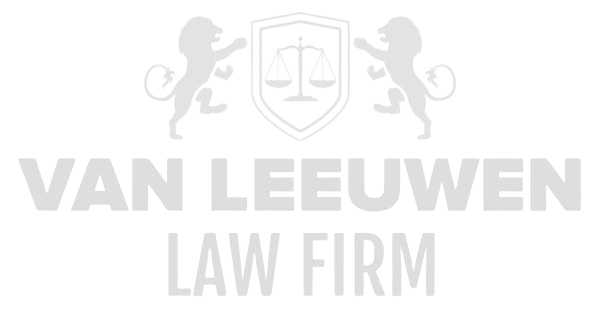In today’s business climate, where international trade and complex collaborations are increasingly the norm, forming strategic partnerships is an indispensable pillar for growth and innovation. However, such partnerships inherently carry significant legal and reputational risks, especially when involved parties face allegations of financial mismanagement, fraud, bribery, money laundering, corruption, or violations of international sanctions. The impact of such allegations rarely remains confined to the accused party alone; risks are often shared and can spread like an oil spill across affiliated organizations, severely threatening the continuity of the entire enterprise. The repercussions manifest not only in financial damage but primarily in irreversible harm to reputation, undermining the trust of customers, investors, and regulators.
Rethinking business partnerships in such a risky environment requires an extremely careful and strategic process, in which every detail of potential collaborations is examined thoroughly and with legal acumen. This process begins not with superficial screening but demands rigorous due diligence that penetrates the integrity, compliance history, and financial stability of partners. Consideration must be given both to past incidents and potential future risks arising from the context of international sanctions and criminal liabilities. Drafting and restructuring contracts play a crucial role, where legal clauses must explicitly provide protection against the spillover of negative consequences onto the organization itself. It is about securing the company’s operations through clear exit strategies, sanction clauses, and guarantees that precisely define and enforce risk allocation.
Due Diligence and Partner Screening
Intensifying due diligence in the context of strategic partnerships becomes indispensable when there is a possibility of association with parties potentially involved in financial mismanagement, fraud, or corruption. This involves more than obtaining standard information; it requires deep investigation of backgrounds, ownership structures, and business practices, including possible connections to high-risk jurisdictions and sanction lists. The inquiry must extend to analyzing reports, criminal investigations, and possible negative media attention, as the presence of such factors can serve as early warnings of looming risks. The complexity of this due diligence demands a multidisciplinary approach, where legal expertise, forensic analysis, and financial audit are inseparably linked.
This process does not stop at a one-time assessment before the collaboration starts. Ongoing monitoring and periodic reassessment are crucial to keep track of changing circumstances and risks of partners. In a dynamic international market, conditions can rapidly evolve, and new facts and developments may drastically alter a partner’s risk profile. Ignoring this reality can expose a company long-term to liabilities that arise unexpectedly and beyond its sphere of influence. A robust ongoing compliance program aligned with monitoring is therefore indispensable.
Institutionalizing these intensive screening and monitoring processes creates a vital barrier against the infiltration of harmful risks through external partnerships. This barrier not only prevents direct legal issues but also ensures the protection of the company’s integrity and reputation in full. This is a fundamental first step in redefining business partnerships, laying the groundwork for further legal and strategic measures necessary in high-risk environments.
Revising Contractual Obligations
The legal framework in which partnerships are formalized must be adapted more than ever to meet the demands of a risky international trade climate. Traditional contracts, often unilaterally focused on setting out mutual rights and obligations, fall short when risks manifest as criminal suspicions or sanction violations by one of the partners. Contractual provisions must therefore be expanded with strong compliance clauses explicitly governing the prevention of and response to fraud, corruption, and sanction breaches. Including such clauses creates a legal lever to act swiftly and decisively when partners fail in their integrity.
It is essential to incorporate exit options that can be exercised without unnecessary delay or complex procedures in cases of serious underperformance or reputational damage. These clauses act as a protective shield, preventing the company from being pinned in harmful relationships, thereby keeping operational and reputational risks manageable. Furthermore, contracts must require transparency and cooperation obligations for internal investigations and audits so that the organization gains timely insight into potential problems. This increases risk manageability and enables a proactive approach.
Thus, the legal toolkit within contracts acquires a dual role: on one hand enforcing integrity and compliance, and on the other hand creating a legal safety net that allows for swift and effective termination of harmful collaborations. Especially in situations where allegations of financial mismanagement or sanction violations arise, the legal framework is crucial to prevent further escalation and protect the company from multiple liabilities and reputational damage.
Risk Redistribution and Liability Agreements
In light of complex and high-risk partnerships, it is essential not only to identify risks but also to clearly allocate them legally among the parties involved. This means contracts must include explicit provisions on liabilities, guarantees, and securities that oblige partners to take responsibility for their actions and negligence, especially in jurisdictions where corruption and sanction breaches are more common. Restructuring liability arrangements ensures balanced risk allocation and prevents the company from unnecessarily bearing the consequences of others’ mistakes.
Partner guarantees should be reinforced with financial securities, such as requiring bank guarantees, insurance policies, or escrow arrangements that can act as buffers when financial or legal crises occur. These safeguards are essential to protect the continuity and liquidity of the company against the negative consequences of fraud or corruption elsewhere in the chain. Failure to include such securities can lead to prolonged and costly legal proceedings in which the company faces significant risks.
Moreover, the contractual structure must be designed so that it remains possible to enforce liability effectively in cross-border collaborations, even when a partner operates in jurisdictions with limited enforceability. This requires an advanced legal strategy that responds to international regulations and sanction laws and strengthens the company’s position through legally enforceable mechanisms to optimize damage control.
Integrity and Compliance as Core Requirements
In risky partnerships where fraud, corruption, and sanction breaches lurk, integrity must not be a mere recommendation but a strict condition that must be met. This means anti-fraud, anti-corruption, and sanction compliance must be deeply embedded in the governance and operational structures of the collaboration. Partners’ performance should be made measurable and anchored in Key Performance Indicators (KPIs) that cover not only financial but also compliance-related objectives. This approach fosters a culture of accountability and increases transparency.
Furthermore, implementing regular, independent audits is an indispensable mechanism to test compliance with conduct standards and legal obligations. These audits should not only take place at the start of the partnership but be repeated at scheduled intervals, with findings addressed immediately through sanctions or corrective measures. Through this continuous scrutiny, hidden risks are detected early, preventing escalation and additional reputational damage.
Embedding compliance as a fundamental element in the collaboration requires ongoing commitment from all involved parties and shared responsibility for upholding the highest standards. This is not only crucial for limiting legal risks but also to maintain the trust of customers, regulators, and the market in a time when pressure for transparency and ethical business conduct is increasingly intense.
Transparency in the Value Chain
The complexity of modern supply chains and partnerships means risks often do not lie directly with the immediate partner but with the obscure links of suppliers, subcontractors, and other third parties. A lack of insight into this value chain can lead to unforeseen exposure to money laundering, corruption, and other illegal practices that can severely damage the company’s reputation and continuity. Therefore, demanding full transparency throughout the entire chain is essential.
This requires thorough traceability and reporting on the origin of products and services, as well as monitoring all involved parties for integrity and compliance. Technologies such as blockchain and advanced data analytics can make chains more transparent, enabling irregularities and suspicious transactions to be detected and addressed swiftly. This traceability forms a critical link in risk management within complex international networks.
By actively eliminating opaque links and promoting full openness, not only is the risk of involvement in illegal activities minimized, but the company’s credibility is also strengthened. In situations where allegations of fraud or sanction violations occur, this can make the difference between maintaining trust and irreparably damaging reputation and market position. Transparency is thus not merely a compliance requirement but a strategic necessity in an increasingly critical world.
Relationship Management Under High Tension
In situations where partners face serious allegations of financial mismanagement, fraud, bribery, or sanctions violations, an extremely tense relationship emerges that must be carefully managed to prevent further escalation. Managing such partnerships requires a diplomatic approach, balancing the continuity of the collaboration without unnecessarily jeopardizing it, while also protecting the organization from additional risks. This demands keen insight into the dynamics between parties, where communication and interests must be carefully weighed. In this context, it is essential for the organization to adopt a proactive and strategic stance, setting clear boundaries and demanding behavioral change.
Establishing a joint crisis communication structure between partners can be crucial in these situations. When allegations arise, coordinated and transparent communication is essential to limit reputational damage and adequately inform stakeholders. This communication must be carefully prepared, taking all legal implications into account and balancing the interests of all parties involved. Managing external perception requires a joint approach that prevents conflicts from escalating publicly and generating unnecessary negative attention.
Additionally, maintaining the relationship under high tension plays a role in ensuring operational continuity. Avoiding a rupture that disrupts the supply chain or service delivery can, in certain cases, be strategically necessary, provided the risks remain manageable. This requires continuous evaluation of the situation and timely decision-making, with a focus on maintaining trust and minimizing damage. Carefully balancing business interests and reputational risks is an unavoidable challenge in this context.
Diversification of Partnerships
Relying on a single strategic partner in high-risk sectors, where allegations of fraud, corruption, or sanctions violations frequently occur, introduces significant vulnerabilities. Diversifying partnerships is therefore a fundamental strategy to mitigate these vulnerabilities and enhance the organization’s resilience. By building alternative collaborations, the organization is less exposed to the risks arising from issues with a single partner. This contributes to ensuring operational continuity and preserving market share.
Strategically expanding a broad network of partners across different regions and sectors creates flexibility, enabling the organization to respond more effectively to sudden changes or crises within a partnership. This is particularly critical for key processes and supply chains, where the loss of a partner can have disastrous consequences. Diversification also involves engaging partners with a proven integrity profile and strong compliance culture, positively influencing the overall risk profile of the network.
Achieving a diversified partnership requires a long-term strategy and an integrated approach combining risk analysis, compliance, and strategic interests. It demands ongoing evaluation of existing relationships and actively seeking new, reliable partners. Only in this way can a company avoid unnecessary vulnerability and unprepared exposure to legal and reputational risks that could severely disrupt operations.
Monitoring International Sanctions
International trade law and sanctions regulations form a complex and constantly evolving framework within which organizations must operate, especially when collaborating with parties in different jurisdictions. Monitoring compliance with international sanctions therefore requires real-time tracking of sanctions lists and export control regulations. The absence of an effective oversight mechanism can lead to inadvertent violations with far-reaching legal consequences, including heavy fines, trade restrictions, and criminal prosecution. This risk is further heightened when partners operate in regions where sanctions are frequently imposed.
An effective compliance infrastructure includes automating checks against sanctions lists and periodically updating these lists in the system. Additionally, employees involved in international transactions and contract negotiations must receive comprehensive training on applicable sanctions regulations and potential pitfalls. These trainings increase awareness and vigilance, significantly reducing the likelihood of inadvertent violations. They should also focus on identifying high-risk transactions and appropriately escalating suspicious matters within the organization.
Monitoring sanctions compliance is therefore not merely an administrative task but a strategic tool to mitigate legal and operational risks and prevent reputational damage. A robust system and a culture of compliance lay the foundation for safe international collaboration, even in legally challenging environments where sanctions regimes frequently change and expand.
Exit Strategies and Transition Plans
Developing structured exit strategies is invaluable when trust in a partner has been irreparably damaged by allegations of fraud, corruption, or sanctions violations. These exit strategies should aim to minimize operational disruption and financial damage when ending the collaboration. A well-designed transition plan ensures that critical processes, services, or deliveries are seamlessly taken over by alternative partners or continued internally, preserving business continuity.
Formulating such strategies requires a detailed inventory of all contractual obligations, dependencies, and risks associated with ending the partnership. Scenario analyses must also be conducted to map the impact of an exit on various parts of the organization. Only with such thorough preparation can decisions be made that are legally sound while protecting the company’s interests.
Exit strategies must also be flexible and adaptive, allowing for rapid implementation once a crisis arises. Timely and effective execution of an exit prevents prolonged exposure to legal, operational, and reputational risks. Effective transition plans thus contribute to strengthening organizational resilience in an unpredictable and high-risk market.
Reputation Protection and Joint Communication
When a partner faces allegations that could lead to reputational damage, it is vital to carefully coordinate communication around the issue. Joint alignment on public statements is essential to avoid conflicting messages that could undermine the reputation of all involved parties. By presenting a unified communication approach, a credible and consistent positioning is achieved, strengthening credibility with stakeholders and regulators.
Reputation protection also requires that all communication is carefully prepared and that legal risks are assessed before releasing information. Transparency, without disclosing sensitive details, and emphasizing commitment to investigation and compliance can help limit negative publicity. Simultaneously, potential escalations should be mitigated by timely stakeholder engagement and addressing concerns before they develop into reputational crises.
Joint measures to minimize mutual reputational damage also include sharing resources and expertise to support internal investigations and implement corrective actions. This underscores the responsibility of both parties not only to manage risks but also to actively contribute to recovery and transparency. The ability to act professionally and in a coordinated manner in challenging situations is a crucial tool for maintaining trust and ensuring the long-term continuity of the partnership.









